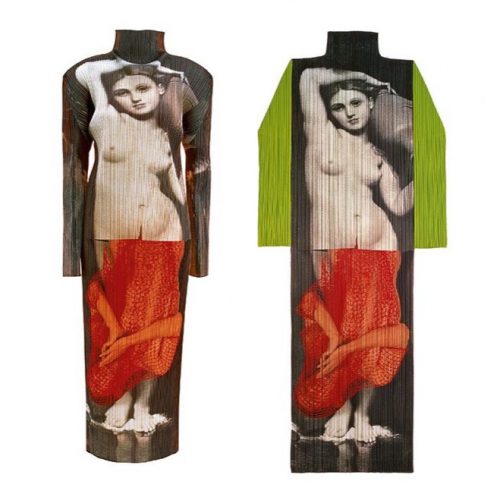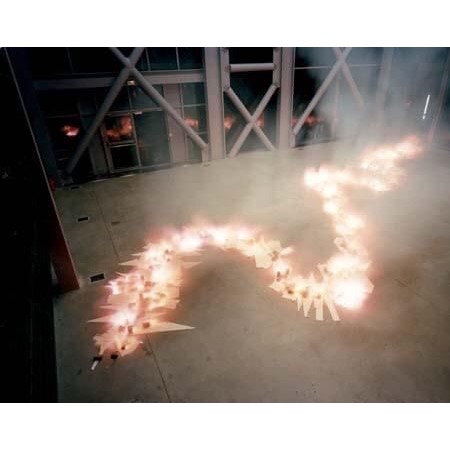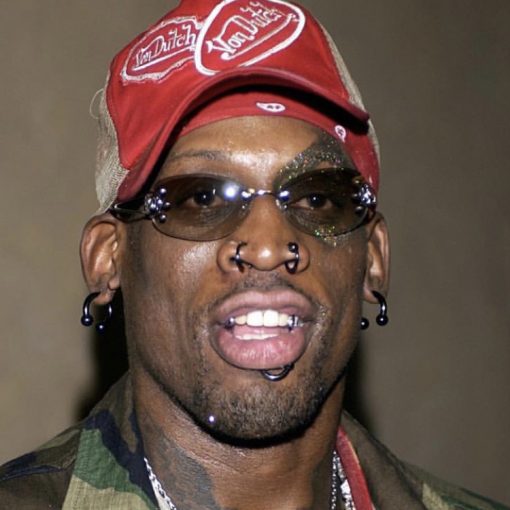In 1993, Issey Miyake launches the line “Pleats Please” implementing a special pleating process to his creations. The garments had dimensions that were twice or even three times, their normal size and after folding, ironing and stitching, were adapted to a wearable size with a beautiful pleated end. Thanks to a final process of hot pressure, the effect could stay permanently, beign able to wash or dry the garment without losing its original shape.
Between 1996 to 1998, Issey launched “Guest Artists Series”, a line in which he collaborates with four contemporary artists from different disciplines using his famous pleats as a canvas.
.
1) YASUMASA MORIMURA (1996)
In this ocassion, Miyake collaborates with the Japanese artist Yasumasa Morimura, known for paying tribute to great paintings and artists, reinterpreting them with his own face. For this collaboration the artist used the painting “La fuente (1856)” by Jean-Auguste-Dominique, looking upside down, putting himself wrapped in a red mesh embracing the piece.
2) NOBUYOSHI ARAKI (1997)
In collaboration with the controversial Japanese photographer Nobuyoshi Araki, known for his photographies of nude women tied in impossible ways and to flowers that evokes to the female reproductive organ. In this creation, we appreciate three different images; a lying down woman, a sunflower and Araki himself.
3) TIM HAWKINSON (1998)
During a trip to the United States, Miyake was visiting an exhibition by the American artist Tim Hawkinson, where they met and initiated this project. Tim´s creation was a collage from parts of his own body printed on Issey Myake´s pleated dresses and overalls, giving the impression of movement while wearing it.
4) CAI GUO QIANG (1998)
Fourth and last collaboration of the serie, with the Chinese artist Cai Guo Qiang. In this occasion, Cai got ready an instalarion at the “Fondation Cartier pour l’art Contemporain” (Paris), where a controlled detonation with gunpowder following geometrical patterns from the traditional Chinese dragon took place on Miyake´s pleats. The result was a burned footprint on the garments, which was then digitally printed on dresses that could be sold.
.
Written by Adrián Lorca



















